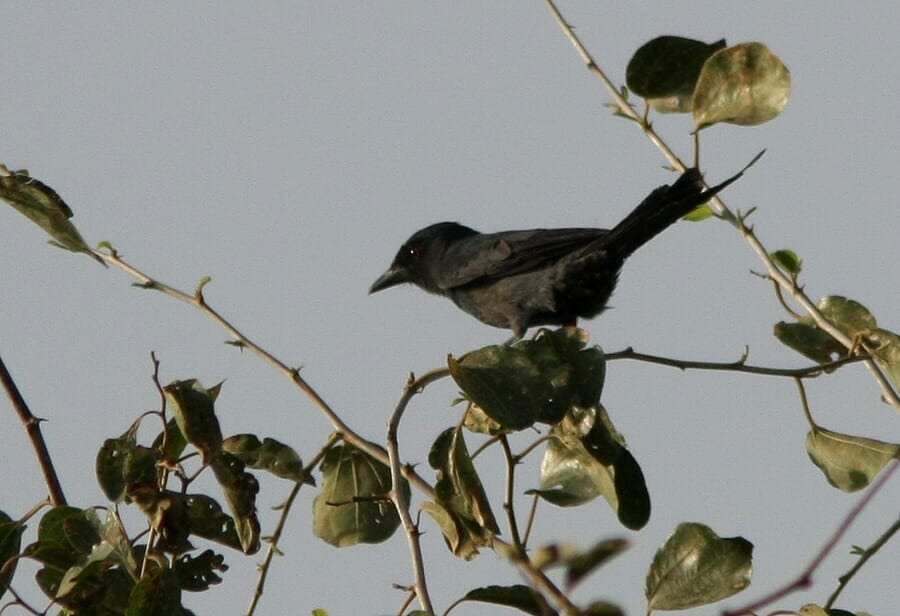03/04/2010 at Jahra Farms
Update 5.4.2010: Thierry and Marianne Quelennec managed to see the bird in its original place yesterday. Seems that it is moving in much bigger area than we assumed.
Update 4.4.2010: I decided to omit word possible as I received confirmation of ID from several people. I have also learnt much about its ID since yesterday as well as seen many photographs. Unfortunately we couldn’t relocate the bird today.
This is update to original posting. Tommy Pedersen confirmed ID and told me that there is in U.A.E. third record: One Al Warsan Water Treatment Plant 21.12.2009 (S.P. Lloyd); presumed same Safa Park 14-15.01 & 02-07.03.2010 (P.Mountain, N.Tovey, R.Khan et al.).
Original posting: Visiting birders Hans Rudhe, Olle Karlson and myself found a Drongo this afternoon at Jahra Farms that seems to be Ashy Drongo. Original founder of the bird is Hans Rudhe. This species has been seen in U.A.E. twice. First sightning is one in Abu Dhabi Hilton/Spinney’s area 16.-19.12.2006 (N.Moran et al). The second record is: One Ain al-Fayda Park 29.02. – 07.03.2008 (S.L.James et al). However, the ID and the status of this bird will be reviewed and confirmed later on by KORC.
The bird seemed to be in perfect plumage which is not typical for long-tailed gage bird. Its behaviour was normal for Drongo and it wasn’t tame. Still we need to check all possibilities.
Ashy Drongo (Dicrurus leucophaeus)


Well done!
Looks good for Ashy Drongo.
Here are the current updated records for the Western Palearctic:
Ashy Drongo Dicrurus leucophaeus longicaudatus
Vagrant.
1. One Abu Dhabi; Hilton/Spinneys area 16-19.12.2006 (N.J.Moran et al.).
2. One Ain al-Fayda 29.02-20.03.2008 (S.L.James et al.).
3. One Al Warsan Water Treatment Plant 21.12.2009 (S.P. Lloyd); presumed same Safa Park 14-15.01 & 02-07.03.2010 (P.Mountain, N.Tovey, R.Khan et al.).
Cheers,
Tommy
The bird seemed to be in perfect plumage which is not typical for long-tailed gage (sic) bird. Apart from losing half of its fork tail that is! It also seems to have lost some feather vanes and the tail feathers seem to be varying stages of growth, suggesting that it prematurely lost tail feathers at differing times!
The bill looks slightly too thick for ashy but this probably due to the slight blurring in the photograph. The equisite “kink” this species shows at the end of the tail feathers is so delicate and so characteristic and would not be enhanced for any period of time in captivity.